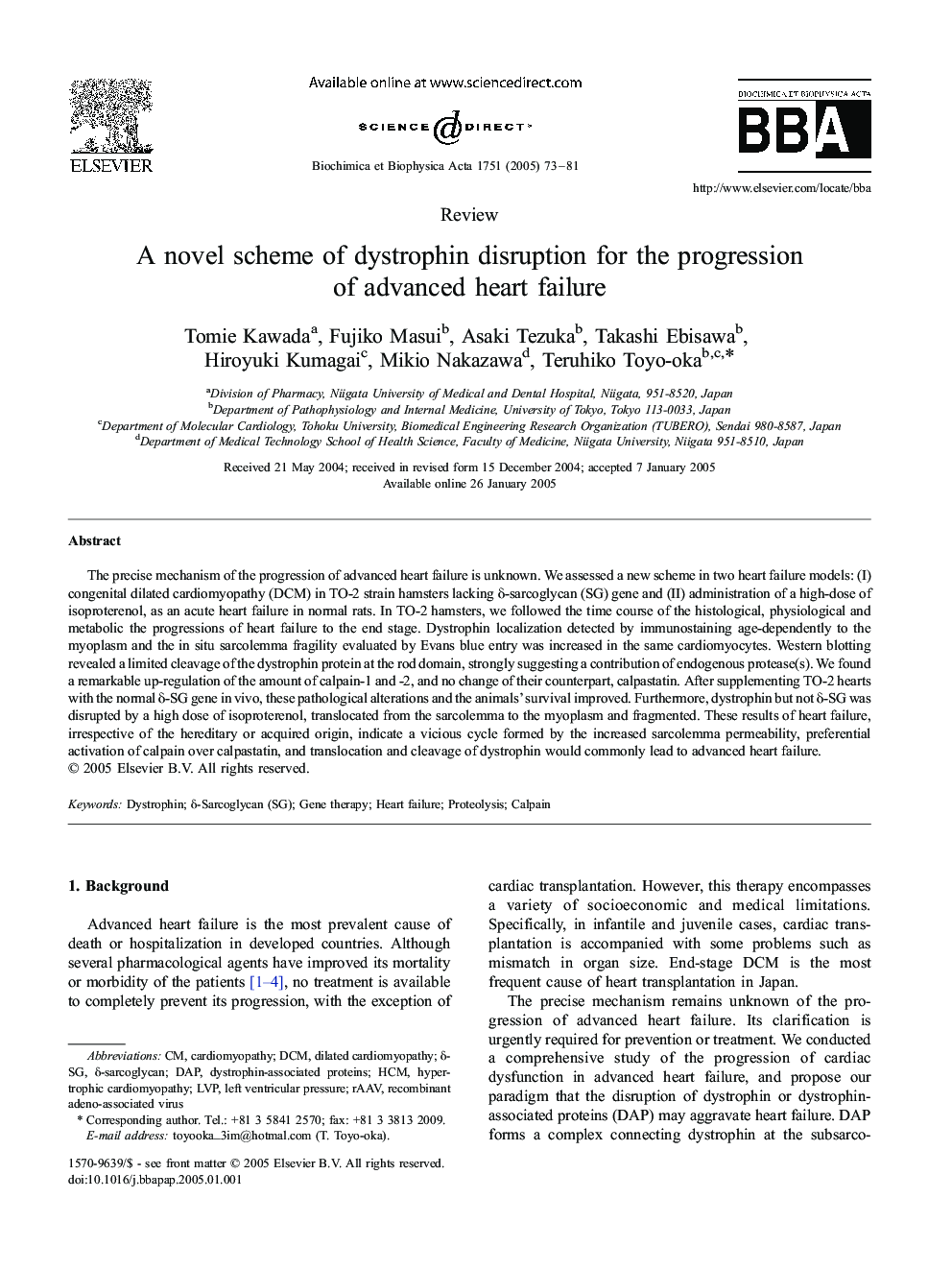| Article ID | Journal | Published Year | Pages | File Type |
|---|---|---|---|---|
| 10537649 | Biochimica et Biophysica Acta (BBA) - Proteins and Proteomics | 2005 | 9 Pages |
Abstract
The precise mechanism of the progression of advanced heart failure is unknown. We assessed a new scheme in two heart failure models: (I) congenital dilated cardiomyopathy (DCM) in TO-2 strain hamsters lacking δ-sarcoglycan (SG) gene and (II) administration of a high-dose of isoproterenol, as an acute heart failure in normal rats. In TO-2 hamsters, we followed the time course of the histological, physiological and metabolic the progressions of heart failure to the end stage. Dystrophin localization detected by immunostaining age-dependently to the myoplasm and the in situ sarcolemma fragility evaluated by Evans blue entry was increased in the same cardiomyocytes. Western blotting revealed a limited cleavage of the dystrophin protein at the rod domain, strongly suggesting a contribution of endogenous protease(s). We found a remarkable up-regulation of the amount of calpain-1 and -2, and no change of their counterpart, calpastatin. After supplementing TO-2 hearts with the normal δ-SG gene in vivo, these pathological alterations and the animals' survival improved. Furthermore, dystrophin but not δ-SG was disrupted by a high dose of isoproterenol, translocated from the sarcolemma to the myoplasm and fragmented. These results of heart failure, irrespective of the hereditary or acquired origin, indicate a vicious cycle formed by the increased sarcolemma permeability, preferential activation of calpain over calpastatin, and translocation and cleavage of dystrophin would commonly lead to advanced heart failure.
Keywords
Related Topics
Physical Sciences and Engineering
Chemistry
Analytical Chemistry
Authors
Tomie Kawada, Fujiko Masui, Asaki Tezuka, Takashi Ebisawa, Hiroyuki Kumagai, Mikio Nakazawa, Teruhiko Toyo-oka,
